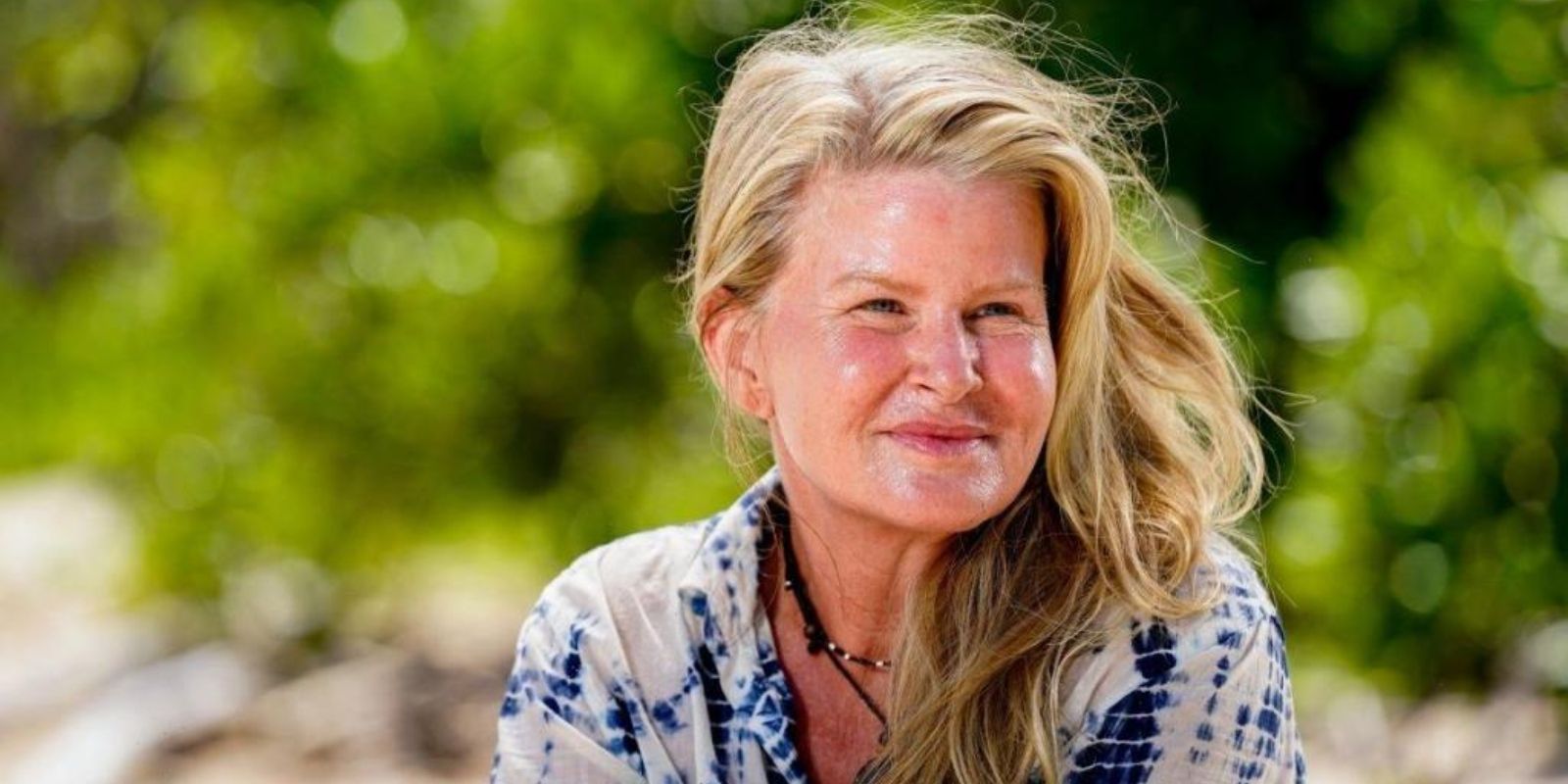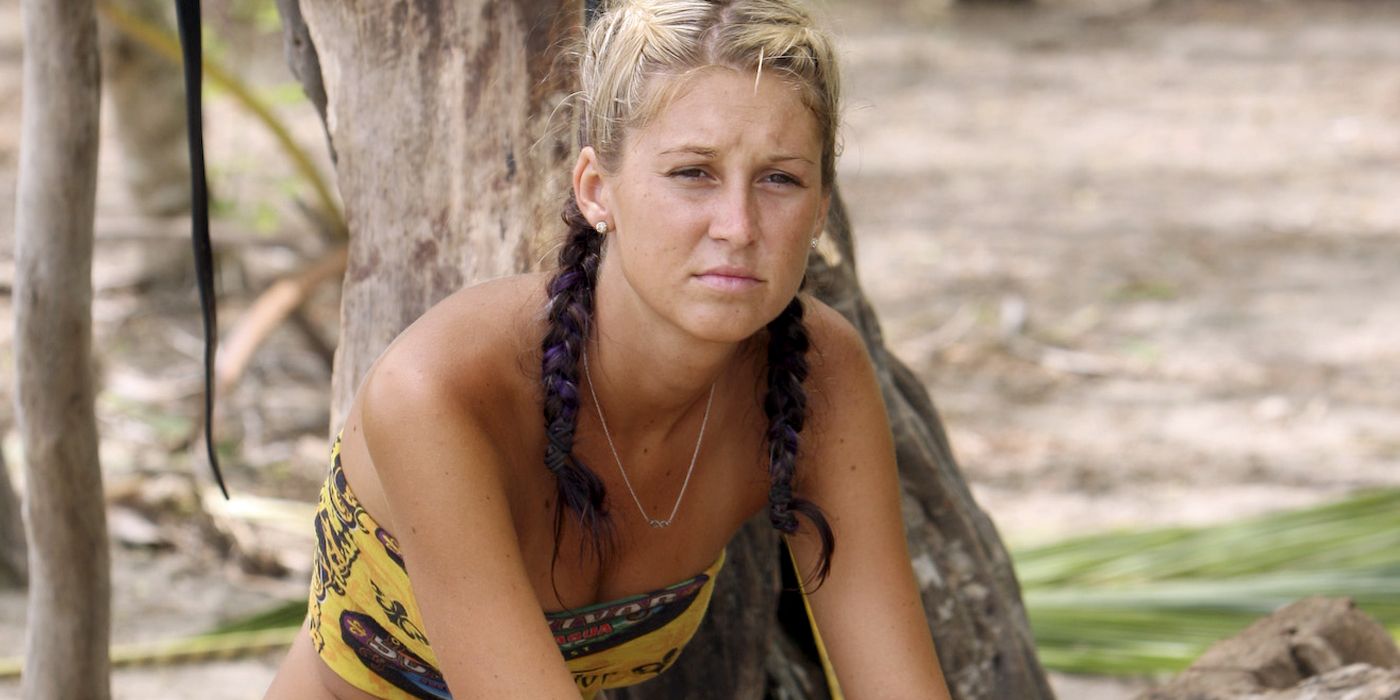The story of Heather Aldret's invisible edit on Survivor begins with snail mucus.
Historically, the color purple is a sign of royalty, its bright hue signifying wealth and stature. This all started in the Phoenician city of Tyre, located in what is now Lebanon, where the purple-producing mucus of a sea snail species known today as Bolinus brandaris was harvested in the Byzantine Empire to produce a dye that colored some of the most expensive clothing at the time. Eventually, the Byzantine empire had its proverbial torch snuffed, and, some 400 hundred years later, synthetic dyes became more widely available, rendering the ostentatious royal purple of yesteryear, simply, normal purple. Meanwhile, the formerly utilitarian mollusks assumed a role on extravagant dinner plates.
Although snail snot was no longer formally adorning the upper echelons of the social strata, the remnants of its origins have been sneezed across time. Queen Elizabeth famously wears purple to emphasize her royal stature; one of the colors of the flag of the Women’s Social and Political Union in England was purple to identify “the royal blood that flows in the veins of every suffragette." In America, a land with no monarchy, the meaning of purple morphed to become more egalitarian. George Washington established the Purple Heart Award, associating the color not as much with class as with valor. First ladies like Michelle Obama and Jill Biden, as well as Vice President Kamala Harris, have famously worn purple at inaugurations to show unity between the two major parties. Prince's hit song Purple Rain also blended red and blue, but in less sunny terms: “When there’s blood in the sky – red and blue = purple," the late artist once described. Tribute shows and a movie have been dubbed "Purple Reign", a nod the the color's regal beginnings. Over time, purple's modern interpretations have ranged from gloom to hopefulness to majesty.
In 2010, the color purple underwent another transformation. Kelly Shinn, a 20-year-old nursing student with purple streaks in her hair, began her journey on Survivor: Nicaragua. Kelly's stint on the show would have been fairly unremarkable—she was boring television and then decided to quit the game after the merge—if not for the recognition she earned from being noticeably absent from the show's edit. Online sleuths and wily superfans of Survivor had long been fascinated with the edit, intently focused on who was most likely to win (and, conversely, who stood no shot) based on the amount of screen time they amassed and the type of portrayal they were receiving. Needless to say, there was no edgic expert who'd pegged Kelly as a potential winner in Nicaragua; she had five confessionals over the course of 11 episodes. But Purple Kelly, as she's colloquially now known, birthed new Survivor lingo that has encapsulated the experience of under-edited characters for the last decade-plus: the Purple Edit.
Many contestants have fallen victim to the Purple Edit in the latter half of Survivor history, a trend that may have begun the season prior to Purple Kelly's. Survivor, recognizing the television gold it had in Russell Hantz on Samoa, aired 108 of his confessionals—the most ever, while the winner of the season, Natalie White, only got 1.08 confessionals per episode—the lowest in history for a Sole Survivor (Chris Underwood's incomparable Edge of Extinction victory notwithstanding). Another Samoa contestant, Brett Clouser, was one of the most invisible members among contestants who made a deep run, only showing up for 12 confessionals through 13 episodes. While Russell is far from beloved now due to his bigoted rhetoric, the entertainment he brought to the show at the time caught the attention of millions of fans and drew renewed interest in the series ahead of its second all-star season Heroes vs. Villains. Russell also taught Survivor producers a lesson: they can tell whatever story they want, even if that means some cast members are left out of the narrative.
In some seasons—typically ones like David vs. Goliath where the casting is strong across the board—the confessionals have been more balanced, not favoring any one contestant too heavily even when reliable narrators like Christian Hubicki could have handled much more of the load as a storyteller. In others, such as South Pacific, where Whitney Duncan, Keith Tollefson and Rick Nelson all crack the top 10 most under-edited characters due to the presence of confessional hogs like Coach Wade and Brandon Hantz, the Purpleness is especially apparent.
Whitney, who married her Purple Soulmate Keith and became slightly less Purple on The Amazing Race, was the most under-edited character for 13 seasons at .36 confessionals per episode. On Ghost Island, Chelsea Townsend snatched the title of Purplest Edit when she incredibly lasted the first three episodes without a single confessional. When she was voted out on Day 32, Chelsea averaged one-third of a confessional per episode. This record has withstood for five seasons, but, like a Survivor hourglass, it's in danger of being smashed in season 41.
Through seven episodes this season, stay-at-home mother Heather has had two confessionals. Should she continue at her current pace (.28 confessionals per episode), Heather would go down as the most invisible character in Survivor history. There are several factors working against Heather. She doesn't seem to be involved in any serious strategy talks, she started on a tribe that didn't go to tribal council until the merge and her best character moments have been repackaged as secret scenes.
Heather has leaned into this absurdity, posting Where's Heather photos on her Instagram and Twitter. The editors seem to be having fun with it too; in the latest episode, in which Heather was confessional-less, Jeff Probst asks her a question at tribal council and she is heard, off-camera, remarking that she has nothing to say as the other contestants frantically huddle behind her.
Heather's most memorable moment is during a challenge, where she struggled to make it past the first obstacle, and Jeff delivered one of his odd "THIS IS WHAT SURVIVOR IS ALL ABOUT!" sermons as Heather's tribemates helped her. It was a refreshing scene of humanity amid the abundance of twists, but now all the audience knows about Heather is that she had trouble completing a challenge that one time.
Assuming she doesn't do something reprehensible later this season, Heather deserves better than this, and, frankly, so does every other victim of the Purple Edit (even quitter Purple Kelly!). If Survivor doesn't think someone is interesting enough to be a part of the story, that person shouldn't be cast. Heather is less present on this season than other past contestants who shouldn't have been featured at all, and though it's entertaining to poke fun whenever someone is more shielded from the edit than the local who teaches a tribe how to climb a tree, it's not satisfying seeing a barely visible contestant advance far into the game.
Royal purple began as a rarity, in high supply from the ruling class due to its scarcity. A Purple Edit, too, should be an infrequent commodity. And yet, as the seasons pass, Purple Edits are becoming like synthetic dye: too readily available, de-valuing the purple streaks that once ran through Kelly's hair. A Survivor edit is meant to be shared by all who come within its orbit; the resource of a 43-minute block of weekly time is not unlimited, but it is far more abundant than Byzantine-era snail mucus. It should be treated that way.
Survivor airs Wednesdays at 8pm EST on CBS.
Source: NPS, History, Heather Aldret, Reddit



